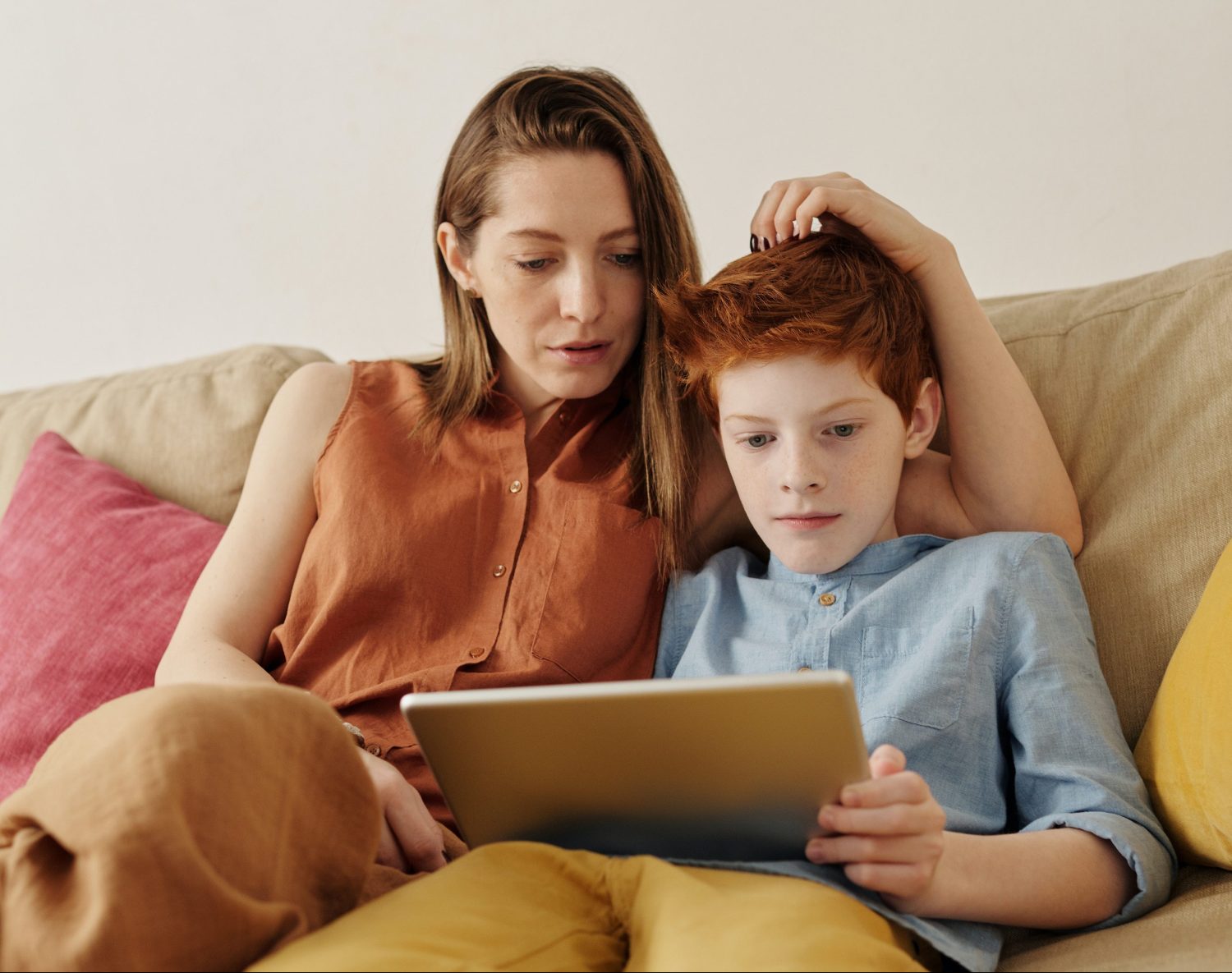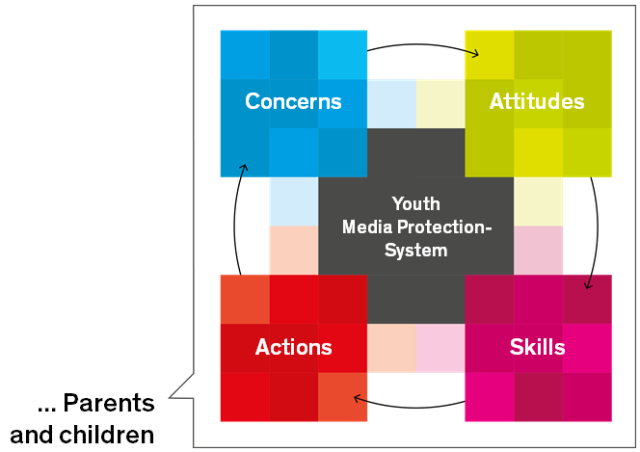The Youth Media Protection Index („Jugendmedienschutzindex“) examines how the protection of children and young people from negative online experiences is reflected in the concerns, attitudes, skills and actions of parents as well as adolescents themselves.
As a result, strengths and weaknesses of the current media policy regulations for the protection of young people from harmful online media as well as the available media education support services become apparent. This empiric evidence offers a basis for further developments and optimisations. The study was initiated and published by the FSM and conducted by the Leibniz Institute for Media Research | Hans Bredow Institute (HBI) and the JFF – Institute for Media Research and Media Education.
The empirical basis of the Youth Media Protection Index is a representative survey of 805 children and young people in Germany aged 9 to 16 who use the internet. In each case, the parent who feels responsible for the children’s online use or online education was also interviewed. This study is a repeat survey. Empirical results were available for the first time in the form of the Youth Media Protection Index 2017. The recent data collection took place from 7 March to 1 May 2022. By using the same questionnaire for the most part, the data from both studies – from 2017 and 2022 – can be compared and constants as well as changes can be identified.
„The last few years have shown us, as if under a magnifying glass, the importance of youth media protection and media literacy in the everyday life of families. We can observe that parents’ concerns about online risks have grown compared to 2017 and more children have already had negative online experiences.“
Martin Drechsler, Managing Director FSM e.V.

Concerns about online use
More than three quarters of the parents name at least one cause for concern in the introductory question – which was formulated as an open question. However, the proportion of children and adolescents who mention at least one cause for concern is lower than in 2017, at 44 percent.
- For parents, contact and content risks are in the foreground, followed by concerns about the temporal extent of use and possible negative consequences of use for the child, as well as problematic behaviour of the adolescents themselves and possible cost traps.
- Among adolescents, the ranking is different: here, concerns about the behaviour of (other) adolescents are in the foreground by far, mostly explicitly described with the term „bullying“. This is followed by concerns about unpleasant contacts, possible financial consequences of use and negative personal consequences of use.
Compared to 2017, the number of those who have come into contact with certain risks has increased (significantly) in most cases – this is striking. The proportion is lower only for two of the risks queried.

Parents mainly worry about contact and content risks – children and young people are more concerned with the behaviour of (other) adolescents.
Attitudes towards the protection of minors from harmful media
Protecting children and young people from harmful media is still more important to most parents and children than free access to all online content. For children and young people the possibility of participation in the sense of free access to online offers has become more important.
Most parents and children agree with the measures surveyed for the protection of minors in the media. However, for many measures, the level of agreement has decreased compared to 2017. In some cases, this is differentiated by age. This also applies to the opinion that children and young people are best protected if they know how to protect themselves.
Parents are more confident about technical measures than they were five years ago. Parents and children consider these measures to be useful, especially for younger children, but their protective effect is seen only to a limited extent.
Parents and children agree on who is or should be responsible for protecting minors from harmful media: parents are the first line of defence, but they should not be left alone with the responsibility. A very large number of respondents said that media providers, politicians, regulatory authorities and schools should also take responsibility for protecting minors from harmful media.
61 % of parents agree that parental control settings of devices are a sensible option (2017: 78 %).
Youth protection-related knowledge and online skills
Parents’ and children’s self-assessment and mutual assessment of each other’s skills in dealing with online media are quite similar. Parents as well as children attribute lower skills to younger children than parents, whereas older children perceive themselves and are perceived as more competent.
- 55 % of parents rate their ability to facilitate their child’s safe online use as good or very good. In this respect, parents of girls see themselves in a slightly better position than parents of boys.
- From the age of 13/14 years old, children rate their ability to cope with negative online experiences higher than the support competence of their parents.
- Only few parents and adolescents know about and use support services as well as complaint and reporting centres.
- 60 % of children say they knew who they would turn to in case of negative online experiences.

Actions to protect minors from harmful media
The actions of parents show conflicts between an orientation towards protection and participation.
Parents mainly rely on content- and time-related rules, the observance of age ratings (especially for younger children) and talking about online use (especially for older children). Overall, the activities that were queried become less in the age group 13 to 14 years at the latest, partly earlier.
Parents use technical protection options, especially for their youngest children. One third of parents inform themselves about online risks and how to prevent them.
Discrepancies between parents and children can be seen in the experience of using offers and services. Even if parents use social media more than in 2017, they have little experience of their own with online games, game apps and some social media services.
31 % of parents allow their child to use online services where they see risks, so that they are not excluded from desirable contacts or content.

